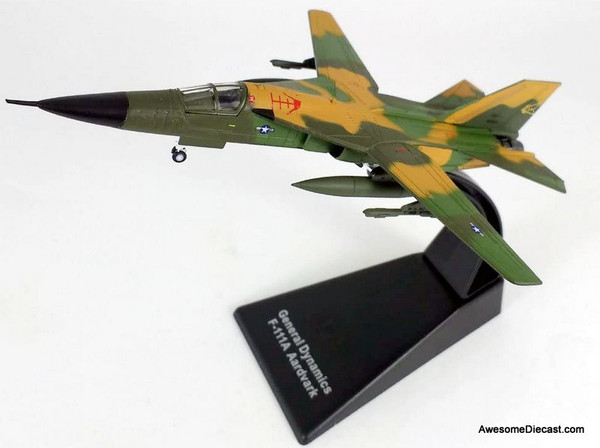Atlas
Atlas 1:144 1967 General Dynamics F-111 Aardvark: USAF

Atlas 1:144 1967 General Dynamics F-111 Aardvark: USAF
MSRP:
$43.02
$35.84
(You save
$7.18
)
The General Dynamics F-111 Aardvark is a retired supersonic, medium-range, multirole combat aircraft. Production variants of the F-111 had roles that included ground attack (e.g. interdiction), strategic bombing (including nuclear weapons capabilities), reconnaissance and electronic warfare. Developed in the 1960s by General Dynamics, the F-111 entered service in 1967 with the United States Air Force (USAF). The Royal Australian Air Force (RAAF) also ordered the type and began operating the F-111C variant in 1973.
The F-111 pioneered several technologies for production aircraft, including variable-sweep wings, afterburning turbofan engines, and automated terrain-following radar for low-level, high-speed flight. Its design influenced later variable-sweep wing aircraft, and some of its advanced features have since become commonplace. The F-111 suffered a variety of problems during initial development.
A fighter variant, the F-111B, was not accepted for production. The F-111B was intended to perform aircraft carrier-based roles with the US Navy, including long-range interception.
USAF F-111s were retired during the 1990s with the F-111Fs in 1996 and EF-111s in 1998. The F-111 was replaced in USAF service by the F-15E Strike Eagle for medium-range precision strike missions, while the supersonic bomber role has been assumed by the B-1B Lancer. The RAAF continued to operate the type until December 2010, when the last F-111C was retired.
The name Aardvark was derived from perceived similarities of the aircraft to the animal of the same name: a long nose and low-level, terrain-following capabilities. The word aardvark originated in the Afrikaans language, as a contraction of "earth-pig", and this was the source of the F-111's nickname of "Pig", during its Australian service.














